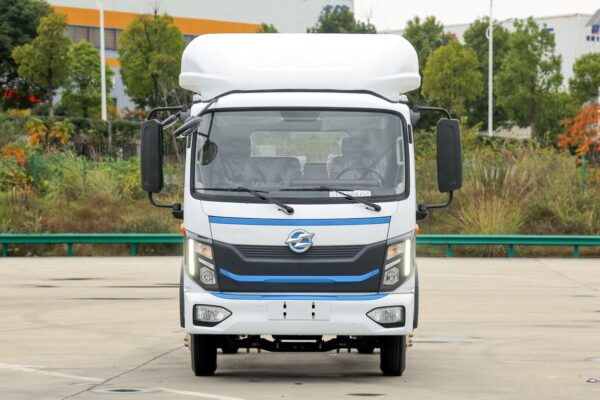Electric Truck Knowledge
In-Depth Analysis of Electric Drive Motors for New Energy Vehicles
Introduction to Electric Drive Motors in New Energy Vehicles
With the rapid advancement of new energy vehicles (NEVs), electric drive motors have become one of the core components of electric vehicles (EVs). The performance of these motors directly affects the efficiency, range, and overall driving experience of an EV. Unlike traditional internal combustion engine (ICE) vehicles, which rely on fuel combustion to generate power, electric vehicles use electric motors to convert electrical energy into mechanical energy. This fundamental shift in propulsion technology has led to the development of different types of electric drive motors, each with its own advantages and challenges.
Electric drive motors are primarily responsible for providing torque and speed control to propel the vehicle. They operate in conjunction with a power battery system and an inverter, which manages power distribution and conversion. Given the increasing demand for energy efficiency, performance, at pagpapanatili, choosing the right type of electric motor is crucial for automakers and consumers alike.
This article provides an in-depth analysis of the different types of electric drive motors used in NEVs, their working principles, advantages, disadvantages, and their applications in modern electric mobility.
Common Types of Electric Drive Motors
There are several types of electric drive motors used in NEVs, each with distinct characteristics. The most common types include:
1. Induction Motors (Asynchronous Motors)
Working Principle:
Induction motors operate based on electromagnetic induction. The stator (stationary part) generates a rotating magnetic field when an AC voltage is applied. This induces currents in the rotor (rotating part), generating a magnetic field that interacts with the stator field to produce torque and drive the vehicle.
Advantages:
- Robustness and Durability: Induction motors are known for their strong and rugged design, making them highly reliable and long-lasting.
- Lower Cost: Compared to other types of motors, induction motors are generally cheaper to manufacture due to their simple structure.
- Good Performance at High Speeds: These motors offer good efficiency and performance at high speeds, making them suitable for certain EV applications.
- Less Dependence on Rare Earth Materials: Unlike permanent magnet motors, induction motors do not require rare earth elements, reducing supply chain risks and cost volatility.
Disadvantages:
- Lower Efficiency: Induction motors are not as energy-efficient as permanent magnet motors, leading to higher energy consumption and reduced range in EVs.
- More Complex Control Systems: Due to their operational characteristics, induction motors require more advanced control systems to optimize performance.
- Higher Heat Generation: These motors tend to produce more heat during operation, necessitating effective cooling mechanisms.
Applications:
Induction motors were widely used in early electric vehicles. For example, Tesla’s earlier Model S and Model X vehicles utilized induction motors before transitioning to permanent magnet motors in later versions.
2. Permanent Magnet Synchronous Motors (PMSM)
Working Principle:
Permanent magnet synchronous motors use embedded permanent magnets in the rotor. The stator produces a rotating magnetic field that interacts with the magnetic field of the rotor, generating torque to drive the vehicle.
Advantages:
- High Efficiency: PMSMs exhibit superior energy efficiency compared to induction motors, leading to better mileage per charge.
- High Power Density: These motors deliver high torque and power output relative to their size, making them compact and lightweight.
- Fast Response and Precision Control: PMSMs provide excellent control over speed and torque, enabling smoother and more responsive driving experiences.
Disadvantages:
- Higher Cost: The use of rare earth materials such as neodymium and dysprosium increases production costs.
- Potential Supply Chain Issues: The dependence on rare earth elements makes PMSMs vulnerable to price fluctuations and geopolitical concerns.
- Thermal Management Requirements: These motors require efficient cooling systems to prevent overheating and maintain optimal performance.
Applications:
PMSMs are widely used in modern electric vehicles due to their efficiency and performance advantages. For instance, Tesla Model 3, Model Y, and many high-performance EVs utilize PMSMs for their front or rear drive units.
3. Switched Reluctance Motors (SRM)
Working Principle:
Switched reluctance motors operate by using the magnetic reluctance principle. The rotor does not contain windings or magnets but rotates due to the attraction between the stator’s magnetic field and the rotor’s iron structure.
Advantages:
- No Dependence on Rare Earth Materials: SRMs eliminate the need for rare earth magnets, reducing supply chain risks and costs.
- High Efficiency at Certain Load Conditions: These motors can be highly efficient when optimized for specific operating conditions.
- Robust and Durable: SRMs have a simple structure, making them highly reliable and capable of operating in harsh environments.
Disadvantages:
- High Vibration and Noise: Due to the nature of the magnetic field interactions, SRMs tend to produce more noise and vibrations compared to other motor types.
- Complex Control Systems Required: SRMs require advanced electronic control systems to optimize performance and minimize drawbacks.
- Lower Overall Efficiency: While they can be efficient under certain conditions, their efficiency is generally lower compared to PMSMs.
Applications:
SRMs are still in the research and development stage for mainstream electric vehicles, but some manufacturers are exploring their potential for cost-effective and sustainable EV solutions.
Comparison of Different Motor Types
| Motor Type | Efficiency | Cost | Rare Earth Dependence | Durability | Control Complexity | Heat Generation |
|---|---|---|---|---|---|---|
| Induction Motor (IM) | Moderate | Low | None | High | High | High |
| Permanent Magnet Synchronous Motor (PMSM) | High | High | Yes | Moderate | Moderate | Moderate |
| Switched Reluctance Motor (SRM) | Moderate | Moderate | None | High | High | Low |
Future Trends in Electric Drive Motor Technology
As the EV industry continues to grow, motor technology is expected to evolve in several ways:
- Improved Power Density and Efficiency: Research and development efforts aim to enhance motor performance while reducing size and weight.
- Reduced Dependence on Rare Earth Materials: Innovations in motor design are focusing on minimizing or eliminating rare earth elements to ensure cost stability and environmental sustainability.
- Enhanced Thermal Management Systems: Advanced cooling technologies, such as liquid cooling and integrated thermal management, are being developed to improve motor efficiency and longevity.
- Integration with AI and Smart Controls: The implementation of artificial intelligence and smart control systems will optimize motor performance and efficiency in real-time.
- Next-Generation Motor Technologies: Emerging motor designs, such as axial flux motors and hybrid electric drive systems, are being explored for their potential advantages in power efficiency and compactness.
Conclusion
Electric drive motors are the backbone of new energy vehicles, playing a pivotal role in determining their efficiency, performance, at pagpapanatili. While induction motors, permanent magnet synchronous motors, and switched reluctance motors each have their own advantages and limitations, ongoing advancements in motor technology will continue to drive improvements in electric mobility. By carefully selecting and optimizing motor designs, automakers can enhance the efficiency, cost-effectiveness, and overall performance of electric vehicles, paving the way for a cleaner and more sustainable future in transportation.



